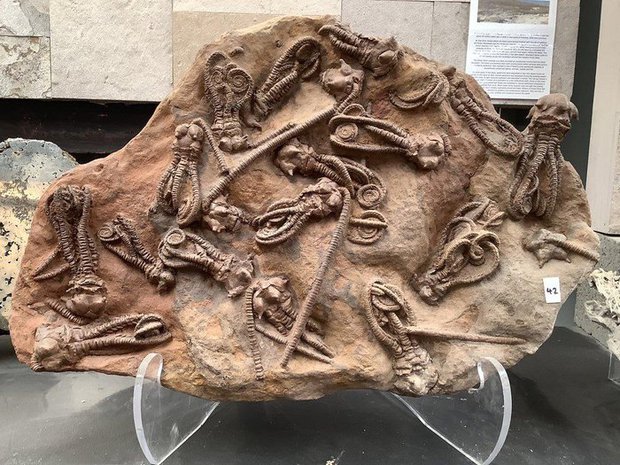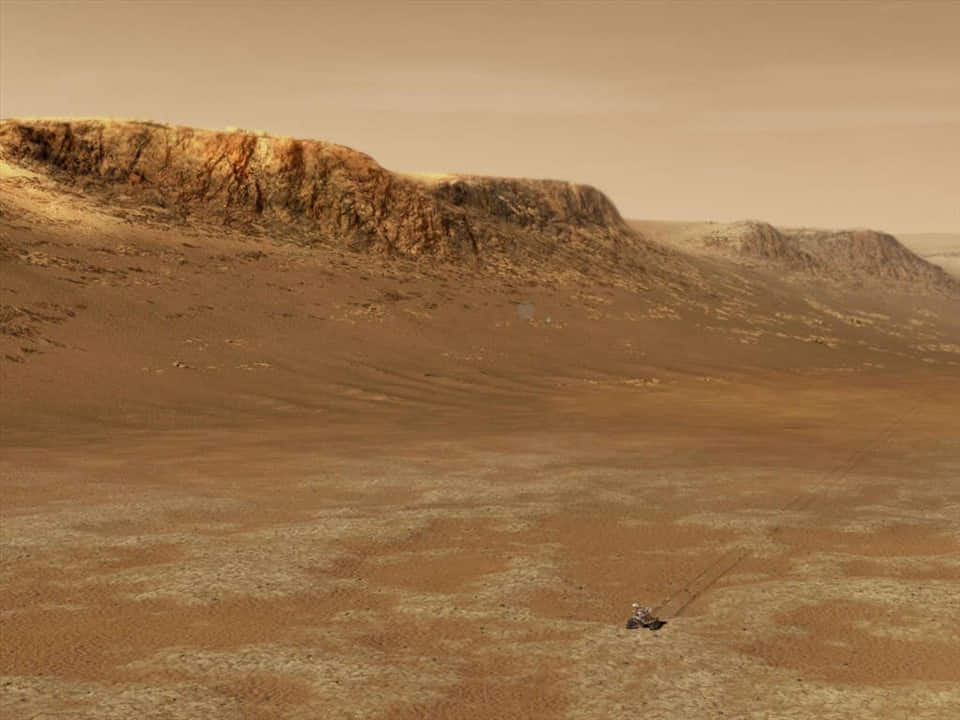This 280 million year old fossil has such a strange and confusing shape that many people, when first looking at it, will think that this is definitely an alien fossil.
An image that recently went viral on social media depicts a nearly perfectly preserved fossil of a sea creature that lived 280 million years ago. Many people immediately confirmed that this was definitely an alien fossil. But what exactly is this animal?

Jimbacrinus fossils show that they were sea-dwelling animals that flourished in what is now Western Australia during the Permian period. They have grown to a length of about 9 inches.
In fact, the fossil in question belongs to the species Jimbacrinus crinoids, also known as sea lilies, and was found in Western Australia. These marine creatures lived about 280 million years ago, during the Permian period, and their fossils provide valuable insights into the evolution and diversity of life on Earth.
Fossils of this species first came to public attention through an image that was widely spread on social networks. The image shows them arranged in a group, suggesting they were buried in the sedimentary rocks of their natural habitat. The fossils are believed to have been found near Gascoyne Junction, a remote area in Western Australia known for its geological diversity.

Jimbacrinus has five arms formed by tentacle-like structures. Like all crinoids, it uses these outstretched arms to feed on small animals and particles in the water. The crinoids have a long history. They were the first echinoderms to appear in the fossil record and have retained their original structure throughout their long history. Crinoids were extremely common during the Paleozoic Era.
When Midwest Times investigated the source of the image, they discovered that it had been posted on the website of a US-based fossil dealer. This dealer claims that the fossil was obtained legally and can be sold to interested buyers. This raises a number of questions about the legal status of fossil collecting and trading in Australia, where laws relating to fossil collecting and selling vary widely from state to state.
David Gear, representative of the Western Australian Museum, clarified the legal status of fossil collecting in Western Australia. According to Gear, it is legal to collect and export fossils under certain circumstances, but collectors must obtain the necessary permits and follow guidelines for responsible fossil collection. Gear also emphasized the importance of leaving fossils in their natural environment whenever possible, as they provide important scientific data about the history of life on Earth.

Fossils of this alien-like species were once abundant in the shallow seas that covered much of Western Australia during the Permian period – first discovered in 1949 by cattle station manager Jimba Jimba, where this genus was named. Mr J Bostock (for whom the species is named) found fossils of Jimbacrinus crinoids in the Cundlego Formation, a sandstone formation created by flood and storm deposition during the Early Permian period around 275 million years ago.
This geological formation was found along a dry creek bed and contains fossil remains of many species that inhabited the seabed during that era. Interestingly, these fossils are often found complete and have not been discovered in any other location.
Fossil deposits near Gasocyne Junction provide a glimpse into the extinction events of the Permian Period, at the end of which the “Great Destruction” occurred. This is the largest and most severe of the five known mass extinctions during recorded geologic time, causing more than 90% of all marine species to disappear from the ocean. our planet at that time. Rising global temperatures lead to warmer and more acidic waters, increasing methane and metal concentrations and severely reducing oxygen levels in the water, making it difficult for marine animals to survive. However, a small percentage of crinoids survived the extinction event and today there are still more than 600 species of crinoids living on our planet.

Another interesting fact is that fossils of crinoids were the inspiration for the image of the Sentinel in the movie The Matrix. Although Sentinels initially had limited functions, they eventually evolved into machines that scoured the underground metropolis in search of humans and Zion ships.
Fossils of the Jimbacrinus crinoids found near Gascoyne Junction are especially notable because they are the most complete and intact fossil specimens on our planet, which could allow scientists to study soft tissues and their internal structures in more detail.





